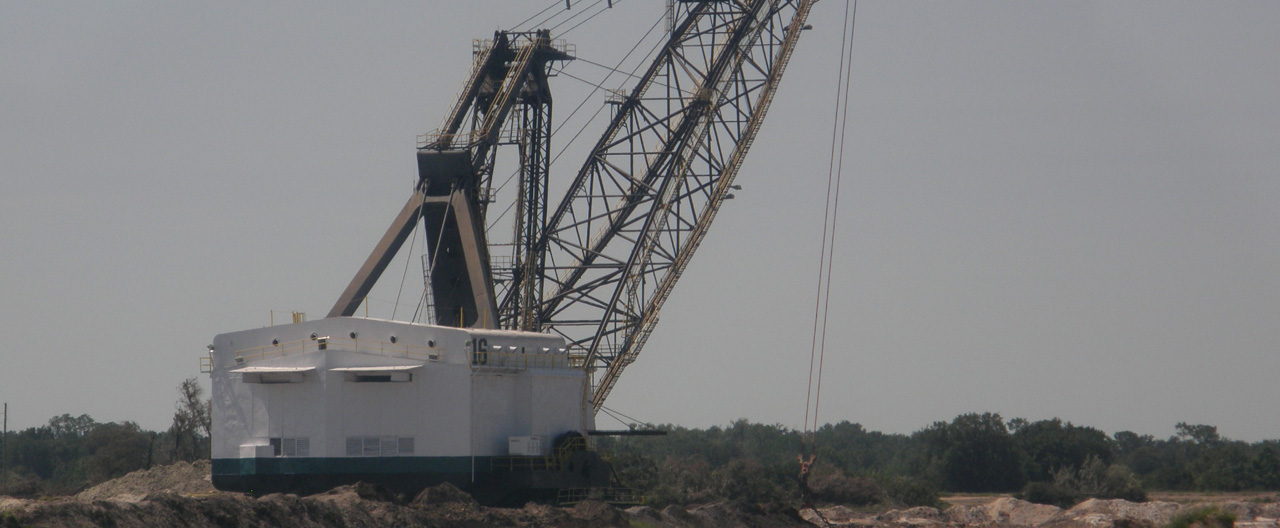The FIPR Institute’s research in the areas of mining and beneficiation (mineral processing) concentrates on issues pertaining to the mining of phosphate rock and beneficiation of phosphate ore (matrix), which separates the valuable phosphate rock from waste clay and sand. According to the FIPR Institute’s legislative mandate, the Institute’s research should develop technology to help Florida’s phosphate industry become more efficient and environmentally sound.
The Institute has funded research addressing issues and topics such as current mining practices; pipeline and pump design; matrix transportation; online sensors to analyze phosphate materials; land use evaluation and planning; flotation efficiency; dolomite separation; dewatering of phosphatic clay; and process control.
As phosphate mining moves south from the Bone Valley mining core in Polk County, the land has much more dolomite (calcium magnesium carbonate), which causes problems when the phosphate is processed into the phosphoric acid used in fertilizers. This has made finding ways to separate the dolomite from the phosphate a research priority for the FIPR Institute. Another research focus in the beneficiation area is to streamline the flotation process and reduce the number or amount of reagents (chemicals) used to separate the sand and clay from the phosphate rock after it is mined. The Institute is also looking for ways to use computerized technology to control the beneficiation process.
Dealing with the clay that is separated from the phosphate is another FIPR Institute beneficiation research program priority. Much of what is known about phosphatic clay and the ponds where it is stored stems from FIPR-funded research. The ponds where the waste clays are dumped after they are separated from the ore cover more than 100,000 acres in Florida’s mining regions and it can take three to five years for a full settling area to crust into a land form that can be used – and even then its use is limited since the clay below the crust is the consistency of pudding. This area of research is of particular interest as phosphate companies try to get new mining sites permitted and face community opposition. One concern is that up to 40 percent of the land that has been mined is being left in clay settling areas.
